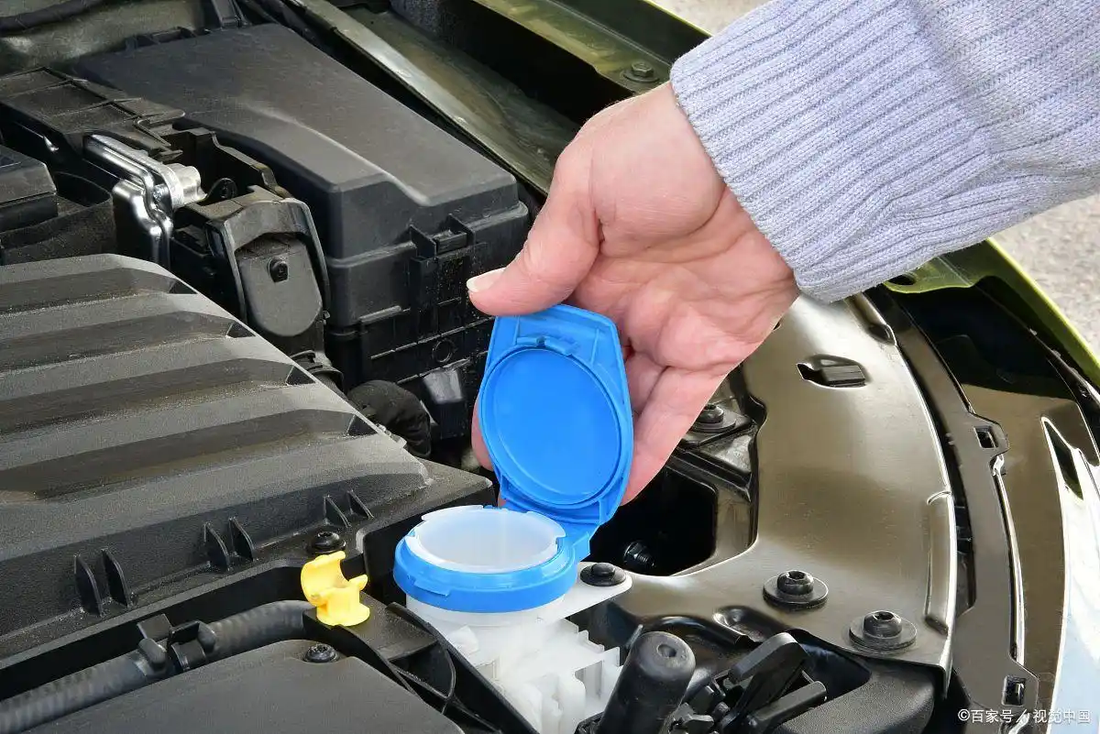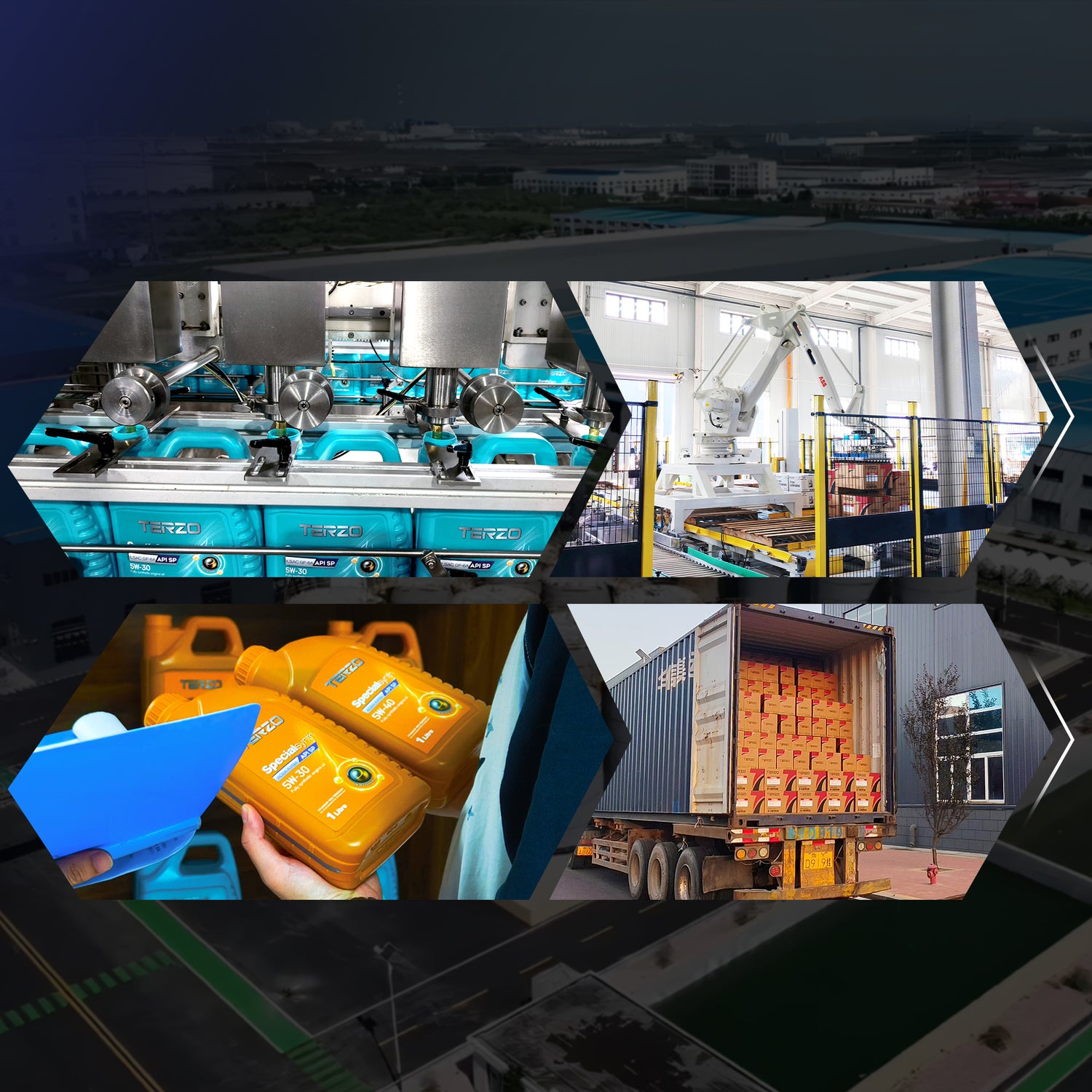
Why Brake Fluid Is Your Vehicle’s "Invisible Guardian": A Deep Dive into Its Core Logic and Selection Guide
Have you ever wondered how your vehicle transitions from high-speed motion to a smooth stop when you press the brake pedal? Beyond the physical friction between brake pads and rotors lies a critical "medium"—brake fluid. As the "blood" of hydraulic braking systems, it transmits pressure and amplifies braking force. Yet its selection and maintenance are often overlooked by vehicle owners. This article unpacks the underlying

logic of brake fluid, combining international standards, technical parameters, and real-world applications to answer key questions like "How to choose the right brake fluid?" and "When should it be replaced?" (Question: Why is brake fluid called the "invisible guardian" of vehicle safety?)
I. From Steam Era to Autonomous Driving: The Century-Long Evolution of Brake Fluid
The origins of brake fluid trace back to 1917, when Scottish engineer Malcolm Lockheed patented the first hydraulic braking system to address the inadequate stopping power of early mechanical systems. Initially, vegetable oil was used as the working medium, but its poor low-temperature fluidity and susceptibility to oxidation quickly rendered it obsolete. With the explosive growth of the automotive industry, brake fluid technology accelerated: in the 1930s, mineral oil-based fluids (e.g., Citroën/Rolls-Royce’s LHM) gained brief popularity for their stability; by the 1960s, glycol-ether-based fluids emerged as the mainstream due to their high boiling points and low compressibility; and in the 21st century, DOT5 (silicone-based) and DOT5.1 (modified glycol-ether) fluids have gained traction for high-performance demands.
This evolutionary trajectory centers on one keyword: reliability. Braking systems must operate stably across extreme temperatures—from -40°C in subzero environments to over 200°C during heavy braking. Failure of any medium here could lead to brake failure. Thus, brake fluid standards have been stringent since their inception.
II. Global Standards: The "Identity Certification" for Brake Fluid
Brake fluid performance is governed by international, national, and regional standards, which define technical parameters and directly impact driving safety. Below is a breakdown of major global standards:
1. International Standard: ISO 4925—The Global "Baseline"
The International Organization for Standardization (ISO)’s ISO 4925 is the most authoritative foundational standard, categorizing brake fluids into 7 classes (Class 3 to Class 7). Classes 3–5.1 are glycol-ether-based, while Classes 6 and 7 further optimize high-temperature performance. For example:
- Class 3: Minimum dry boiling point of 205°C, suitable for standard passenger vehicles;
- Class 5.1: Dry boiling point ≥260°C, low-temperature viscosity ≤900mm²/s (-40°C), compatible with ABS/ESP systems;
- Class 7: Performance close to DOT5.1 but with improved rubber compatibility.
2. U.S. Standard: FMVSS 116—The Global Market’s "Hard Currency"
The U.S. Federal Motor Vehicle Safety Standards (FMVSS) No. 116 defines DOT3, DOT4, DOT5, and DOT5.1, aligning closely with ISO standards (e.g., DOT3 ≈ ISO Class 3, DOT4 ≈ ISO Class 4). Key details include:
- DOT3: Early passenger vehicle standard, dry boiling point 205°C, but highly hygroscopic (wet boiling point 140°C);
- DOT4: Upgraded version with borate esters to boost boiling point (dry 230°C, wet 155°C), compatible with more high-performance vehicles;
- DOT5: Silicone-based standalone system, dry boiling point 260°C, non-hygroscopic but prone to compressibility issues, incompatible with ABS;
- DOT5.1: Non-silicone modified version, matching DOT5’s performance but compatible with glycol-ether systems, with dry/wet boiling points equal to DOT5.
3. Industry Consensus: SAE J-Series—The "Direction Indicator" for Tech Advancements
The Society of Automotive Engineers (SAE) J1703, J1704, and J1705 standards evolve alongside FMVSS 116. For instance, SAE J1704 corresponds to DOT4+ (low-viscosity variant), requiring -40°C viscosity ≤750mm²/s to meet modern demands for rapid brake response.
III. Key Performance Metrics: The Four Dimensions Defining Brake Fluid "Survival"
Technical parameters of brake fluid are not just theoretical—they directly determine the reliability of your braking system. Here are the four critical metrics every vehicle owner should prioritize:
1. Boiling Point: High-Temperature "Anti-Vapor Lock" Capability
During braking, intense friction between pads and rotors generates extreme heat (drum brakes can reach 300°C locally; disc brake calipers exceed 200°C). If brake fluid boils, vaporization creates bubbles (vapor lock)—gas is compressible, causing a "spongy" pedal and drastically increasing stopping distances.
Data Insight: The U.S. National Highway Traffic Safety Administration (NHTSA) tests show that using substandard brake fluid with a dry boiling point of just 190°C can extend braking distances by over 30% after 10 consecutive emergency stops.
2. Viscosity: Low-Temperature "Response Speed"
Viscosity measures a fluid’s "flowability." In cold environments (e.g., -40°C), high-viscosity brake fluid slows oil flow, preventing ABS pumps from rapidly building pressure and impairing emergency braking response. For example:
- Standard DOT4: -40°C viscosity ≤1800mm²/s;
- DOT4+ (low-viscosity): ≤750mm²/s;
- DOT5.1 ESP: Designed for high-performance ABS, -40°C viscosity ≤750mm²/s.
Real-World Application: In winter tests in Tromsø, Norway (average annual temp -3°C), braking systems using low-viscosity DOT5.1 ESP responded 0.1 seconds faster than those with standard DOT4, reducing stopping distance by 10 meters at 80km/h.
3. Corrosiveness: The "Invisible Shield" for Brake Systems
Brake systems contain copper, steel, and rubber components. Highly corrosive brake fluid can degrade oil pipes, seize pistons, and cause leaks. Glycol-ether-based fluids (DOT3/4/5.1) use corrosion inhibitors (e.g., benzotriazole) to protect metal parts; silicone-based DOT5, while non-corrosive to metals, may swell rubber seals over time (leading to leaks).
Case Study: The UK’s Automobile Association (AA) 2022 repair report revealed that 22% of brake pump failures stemmed from corrosive brake fluid, with 80% occurring in vehicles using low-quality DOT3.
4. Compressibility: The "Stability Buffer" for Consistent Pedal Feel
Lower compressibility ensures linear transfer of pedal force to braking action. Glycol-ether-based fluids typically have <0.5% volume change under pressure, while silicone-based DOT5 has 1%-2% compressibility, causing a "soft" pedal feel.
IV. Mainstream Types Compared: DOT3/4/5/5.1—Which Is Right for You?
Common brake fluids fall into four categories. Selection depends on vehicle type, climate, and budget:
| Type | Core Ingredient | Dry Boiling Point | Wet Boiling Point | Viscosity (-40°C) | Suitable Applications | Key Considerations |
|---|---|---|---|---|---|---|
| DOT3 | Ethylene glycol ether + PEG | 205°C | 140°C | ≤1500mm²/s | Older passenger cars (no ABS) | Highly hygroscopic; replace every 2 years |
| DOT4 | Ethylene glycol ether + borate ester | 230°C | 155°C | ≤1800mm²/s | Mainstream passenger cars (with ABS) | More hygroscopic than DOT3; replace every 2–3 years |
| DOT4+ | Modified ethylene glycol ether (low-viscosity) | 230°C | 155°C | ≤750mm²/s | High-performance cars/cold climates (-30°C+) | Compatible with DOT4 systems; requires specialized tools for detection |
| DOT5 | Silicone (polydimethylsiloxane) | 260°C | 180°C | ≤900mm²/s | Classic cars/military vehicles (no ABS) | Incompatible with ABS; requires full system flush |
| DOT5.1 | Low-polyethylene glycol ether | 260°C | 180°C | ≤900mm²/s | Race cars/high-performance vehicles (with ESP) | Partially compatible with DOT4; bleed air carefully |
Data Source: ISO 4925-2019, FMVSS 116-2020.
V. Applications: From Motorcycles to F1 Racers—Brake Fluid’s "Multi-Challenge"
Brake fluid is far more than a passenger car staple—its performance demands vary drastically across transportation modes:
1. Passenger Cars & Commercial Vehicles: Stability First
Standard sedans and SUVs require balanced performance for daily commuting and long-distance driving, making DOT4 or DOT4+ ideal. Commercial vehicles (e.g., light trucks), with higher payloads and more frequent braking, need high-boiling-point DOT4 (≥230°C) to avoid frequent replacements.
2. Motorcycles: Small Volume, High Pressure
Motorcycle hydraulic systems are compact, demanding rapid pressure transmission. High-performance models (e.g., Ducati Panigale V4) require DOT4+ for its -40°C viscosity ≤750mm²/s, ensuring responsive braking in cold starts.
3. Racing & Specialized Vehicles: Extreme Performance Demands
F1 cars endure over 75bar of brake pressure (vs. 10–20bar in passenger cars) and track temperatures exceeding 800°C, necessitating custom high-boiling-point (>300°C) silicone-based fluids. Military vehicles (e.g., Humvees) prefer DOT5 silicone fluid for its -50°C liquidity and low water absorption.
VI. Maintenance & Service: Managing Brake Fluid’s "Lifecycle"
Even with high-quality brake fluid, improper maintenance risks safety. Key maintenance practices include:
1. Replacement Cycle: Not "Lifetime," but "Regular Checkups"
Brake fluid replacement intervals depend on humidity and driving habits, but 2–4 years or 40,000–60,000 miles (whichever comes first) is standard. For example:
- Humid regions (e.g., Guangdong, Southeast Asia): Replace every 2 years due to faster moisture absorption;
- Arid regions (e.g., Northwest China, Russia): Extend to 3–4 years;
- High-performance cars/frequent mountain driving: Replace every 2–3 years due to higher braking frequency.
Professional Data: The American Society of Automotive Repair (ASRA) tests show that 2-year-old DOT4 fluid averages 3.5% water content (wet boiling point drops to 130°C), rising to >5% (wet boiling point <120°C) after 4 years—posing vapor lock risks.
2. Mixing Fluids: "Compatibility" ≠ "Safety"
Different brake fluids should not be mixed:
- Glycol-ether-based (DOT3/4/5.1) can mix with the same type but may reduce performance (e.g., DOT3 + DOT4 yields a boiling point between the two);
- Silicone-based DOT5 mixed with any glycol-ether fluid causes phase separation (silicone rises, water sinks), leading to corrosion;
- Mineral oil-based LHM is incompatible with glycol-ether fluids—mixing causes gelation and pipe blockage.
3. Bleeding Air: "Bubbles" Are the Biggest Enemy
Air in brake lines must be fully bled to prevent a "spongy" pedal and reduced braking force. Traditional "two-person bleeding" (one depresses the pedal, one opens the valve) is inefficient; vacuum or pressure bleeders are recommended to reduce air residue to <0.1%.
4. TERZO Brake Fluid: Redefining "High-Performance Hydraulic Media"
Market research highlights TERZO brake fluid as a top choice for discerning owners, thanks to innovative technology:
-
Premium Standards: Meets DOT5.1 and ISO 4925 Class 6 dual certifications, with a dry boiling point of 265°C (5°C above industry standards) and wet boiling point of
 185°C (5°C higher than DOT5.1);
185°C (5°C higher than DOT5.1); - Low-Temperature Performance: -40°C viscosity of just 680mm²/s (superior to
-
DOT5.1 ESP’s 750mm²/s), ideal for frigid regions (e.g., Scandinavia, high plateaus); - Low Corrosiveness: Passes ASTM D130 copper strip corrosion tests, protecting brake pumps and oil pipes to extend system life by 30%;
- Eco-Friendly Formula: Aromatic-free, reducing rubber swelling and extending seal life by 25%.
User Feedback: Oslo taxi driver Jens notes: "Since switching to TERZO DOT5.1, winter braking response has improved noticeably. I used to replace brake pumps every 3 years—now, they’re still going strong after 5."
VII. Conclusion: Brake Fluid—The "Last Line of Defense" for Safe Driving
Returning to the initial question: Why is brake fluid called the "invisible guardian" of vehicle safety? Because it amplifies the 1,000N force from your pedal into tons of stopping power, maintaining stability across extreme temperatures and pressures. Selecting brake fluid requires balancing vehicle type (ABS/ESP presence), climate (temperature range), and cost, prioritizing DOT4+ or DOT5.1-compliant products.
For drivers pursuing peak performance, TERZO brake fluid—boasting ultra-high boiling points, low viscosity, and extended lifespan—leads the pack for high-performance vehicles and harsh environments. Remember: Brake safety starts with a single drop of quality brake fluid.
Note: Data sources include the International Organization for Standardization (ISO), U.S. Federal Motor Vehicle Safety Standards (FMVSS), Society of Automotive Engineers (SAE), National Highway Traffic Safety Administration (NHTSA), and third-party testing reports. Always consult your vehicle manual for specific product recommendations.

